What's Up? - Ohio Skylights October 2024
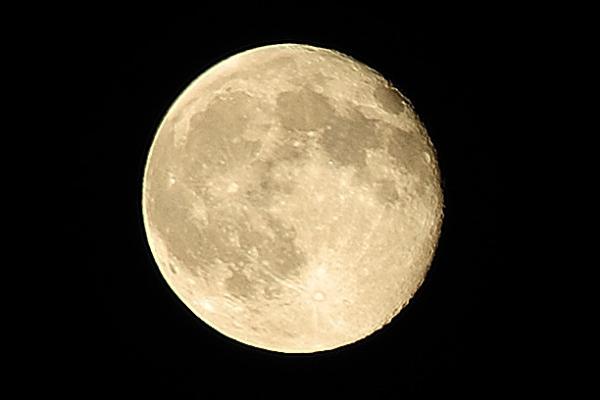
Constellations, Planets, and Astronomical Events Visible in October 2024
Happy October and happy Fall! With the days getting shorter and shorter the month will see sunrise and sunset at 7:28am and 7:13pm at the beginning of the month and sunrise and sunset at 8:00am and 6:30pm at the end. This is a loss of a little over an hour of daylight which means more time to look at the night sky.
On October 2nd we will have a New Moon making for a great opportunity to get some dark skies. The Full Moon this month will occur on October 17th and will also be a Supermoon just like last month meaning the moon will appear a little larger in the sky. This happens because the Moon has a slightly elliptical orbit making its distance to the Earth change. The picture below shows the size difference of the Moon at its closest approach (perigee) and farthest approach (apogee) to the Earth.
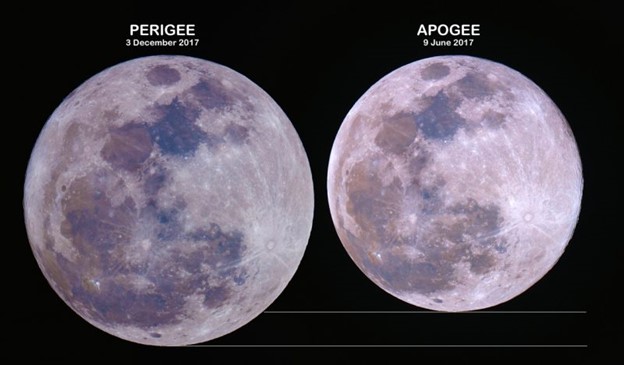
Not much is going on with the planets this month. You’ll be able to see Venus and Saturn just after sunset with Mars and Jupiter rising a little later in the night. Mars and Saturn actually reach their highest points in the sky around 6:00am this month so you’ll have better luck seeing them if you are open to waking up early in the morning.
For more exciting news, October hosts not just one, but two meteor showers! The first is the Draconids Meteor Shower which runs from October 6th to October 10th and peaks on the 7th. This shower will be best viewed in the early evening with about 10 meteors per hour. The second is the Orionids Meteor Shower which runs from October 2nd to November 7th and peaks between October 21st and the 22nd. This shower will be best viewed after midnight with about 20 meteors per hour. These meteor showers happen because of dust grains left behind by different comets that fall into our atmosphere annually. Meteor showers are named after the constellation in which the meteors radiate from with these showers being named after the constellations Draco and Orion respectively. Below are pictures of these constellations and where the showers will radiate from.
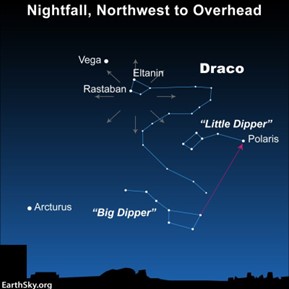
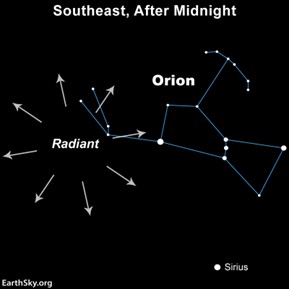
This month I wanted to highlight the constellation Sagittarius. This constellation, distinguished by the teapot asterism at its center, is in the direction of the center of the galaxy. You’ll be able to see Sagittarius just after sunset in the southern sky. Because Sagittarius is near the galactic center, you can find a large number of star clusters and nebulae visible with binoculars or a telescope.
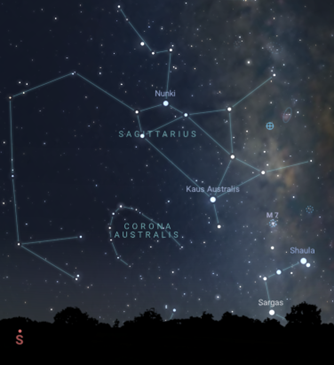
Sources:
- https://www.timeanddate.com/sun/usa/columbus?month=10
- http://www.seasky.org/astronomy/astronomy-calendar-2024.html
- https://stellarium-web.org/
- https://en.wikipedia.org/wiki/Sagittarius_(constellation)
Image Credit:
- Moon image: https://earthsky.org/astronomy-essentials/definition-perigee-apogee-close-and-far-moons/
- Draconids: https://earthsky.org/astronomy-essentials/everything-you-need-to-know-draconid-meteor-shower/
- Orionids: https://earthsky.org/clusters-nebulae-galaxies/everything-you-need-to-know-orionid-meteor-shower/
- Sagittarius constellation: https://stellarium-web.org/
